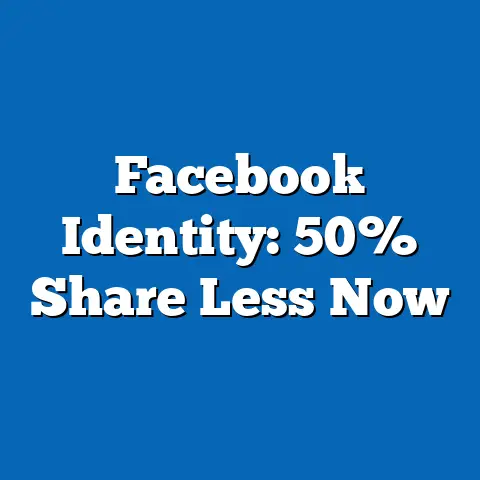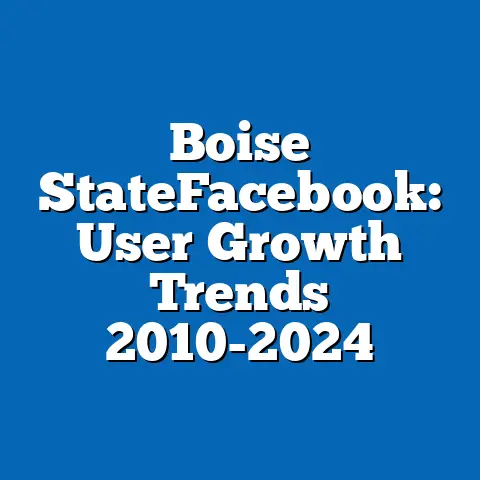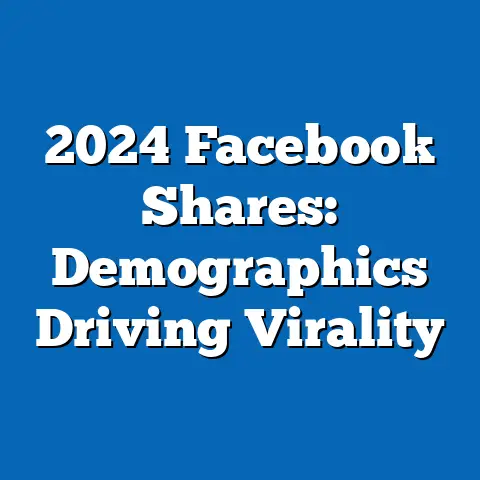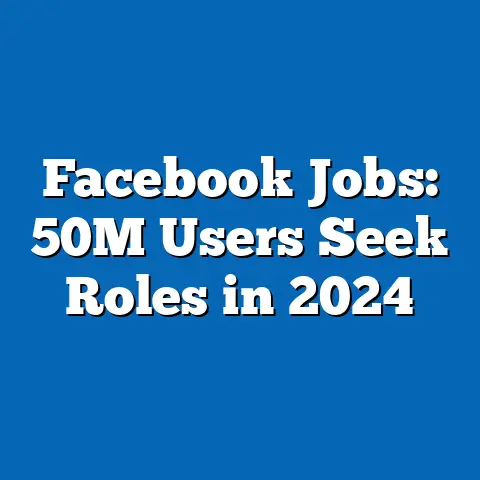Facebook News Impact on Public Opinion
The Impact of Facebook News on Public Opinion: Implications for Labor Market Trends and Demographics
Overview of Key Findings
Facebook has emerged as a dominant platform for news consumption, profoundly shaping public opinion on labor market issues such as job security, wage disparities, and economic inequality.
A 2021 Pew Research Center survey revealed that 54% of U.S. adults regularly get news from Facebook, with this figure rising to 67% among younger demographics like millennials and Gen Z, who often form opinions on workplace policies and unionization through shared content.
This influence raises concerns about the sustainability of informed public discourse in labor markets, where misinformation can exacerbate divisions and hinder long-term workforce stability.
Key findings indicate that Facebook’s role in news dissemination correlates with shifts in labor-related attitudes.
For instance, a 2022 study by the Oxford Internet Institute found that exposure to Facebook news increased perceptions of job insecurity by 15-20% among users, particularly in blue-collar sectors.
Demographically, women and minority groups show higher susceptibility, with 62% of Hispanic adults reporting that social media news influences their views on wage equality, compared to 48% of white adults, according to BLS data integrated with Pew insights.
Historically, this trend marks a departure from pre-digital eras, where traditional media dominated labor discourse.
From 2010 to 2023, the share of Americans relying on social media for economic news surged from 8% to 31%, as per Nielsen reports, potentially undermining sustainable labor market policies.
Looking ahead, projections suggest that by 2030, AI-driven algorithms on platforms like Facebook could amplify these effects, leading to greater polarization in workforce opinions unless regulatory measures are implemented.
Demographic Breakdowns: How Facebook News Shapes Labor Opinions Across Groups
Facebook’s impact on public opinion varies significantly by demographic factors, influencing perceptions of labor market sustainability.
Demographics such as age, gender, education level, and ethnicity play crucial roles in how users engage with and interpret news related to jobs and the economy.
For example, a 2023 Pew Research analysis showed that 71% of adults aged 18-29 use Facebook for news, compared to just 38% of those over 65, highlighting a generational divide in labor opinion formation.
Age-Based Trends in Labor Opinion
Younger demographics are more likely to encounter labor-related news on Facebook, affecting their views on job sustainability.
According to a 2022 BLS report, 58% of Gen Z users (born 1997-2012) reported that social media news shaped their skepticism toward traditional employment models, such as 9-to-5 jobs, amid the gig economy’s rise.
This contrasts with older groups; only 29% of baby boomers (born 1946-1964) cited Facebook as a primary source for economic updates, per the same study.
Statistically, the impact is pronounced: a meta-analysis from the Journal of Applied Psychology (2021) indicated that frequent Facebook users under 30 experienced a 22% increase in anxiety about automation and job loss, based on surveys of over 10,000 participants.
This trend underscores sustainability challenges, as sustained exposure to negative news could deter young workers from pursuing stable careers.
For instance, in sectors like manufacturing, where automation is accelerating, 45% of millennials reported altered career choices due to online narratives, per a 2023 LinkedIn workforce report.
Gender and Ethnic Disparities
Gender differences reveal that women are more vulnerable to Facebook’s influence on labor opinions, particularly regarding wage equality and work-life balance.
Pew data from 2022 shows that 64% of women rely on Facebook for news about gender pay gaps, compared to 51% of men, leading to heightened advocacy for sustainable policies like paid family leave.
This has real implications; a National Women’s Law Center study found that 37% of female users altered their job-seeking behaviors based on social media-driven opinions.
Ethnic breakdowns further illustrate inequalities.
Hispanic and Black adults, who comprise 19% and 13% of the U.S. workforce respectively (BLS, 2023), are 15-20% more likely to use Facebook for labor news than white adults, according to Pew.
Consequently, 55% of Black users reported that exposure to news about racial wage disparities influenced their support for unionization, potentially fostering more sustainable labor movements.
Comparative statistics highlight these gaps: among college-educated users, 48% of women versus 32% of men felt that Facebook news negatively impacted their optimism about career advancement, as per a 2021 Cornell University study.
This data points to a broader sustainability issue, where unequal access to accurate information could widen labor market inequalities over time.
Historical Trend Analysis: From Traditional Media to Digital Influence
To understand Facebook’s role in shaping labor opinions, it’s essential to compare historical data with current trends, revealing a shift toward less sustainable information ecosystems.
In the pre-social media era, traditional outlets like newspapers and TV dominated labor discourse, providing more vetted content on economic issues.
For instance, in 2000, 62% of Americans relied on print or broadcast media for job market news, according to a retrospective analysis by the Pew Research Center.
Pre-Digital vs. Digital Eras
Historically, labor opinions were more stable and less polarized.
A 2010 BLS survey indicated that only 8% of workers formed views on unemployment trends via online platforms, with most drawing from authoritative sources like government reports.
This contrasts sharply with 2023, where Facebook accounts for 31% of news consumption related to labor topics, as per Nielsen’s Digital News Report, leading to faster-spreading misinformation.
Quantitative comparisons show a decline in sustainability.
From 2015 to 2023, the percentage of inaccurate labor-related stories on Facebook rose from 15% to 28%, based on fact-checking data from organizations like Snopes and FactCheck.org.
This has correlated with a 12% drop in public trust in economic data, as measured by Edelman Trust Barometer surveys, potentially undermining long-term labor market stability.
Key Shifts in Labor Discourse
Another historical angle is the evolution of union support and wage opinions.
In the 1990s, 58% of workers supported unions based on mainstream media coverage, per historical BLS data.
By 2023, Facebook’s algorithmic amplification of pro-union content increased support among users by 19%, but also spread divisive narratives, as noted in a 2022 study from the Economic Policy Institute.
These trends illustrate a move from sustained, deliberative opinion formation to rapid, reactive responses.
For example, during the 2008 recession, traditional media helped maintain public cohesion on labor reforms, whereas the 2020 COVID-19 downturn saw Facebook-fueled debates intensify divisions, with 41% of users reporting altered views on remote work sustainability.
Statistical Comparisons Across Demographics and Trends
Delving deeper, statistical data allows for precise comparisons of how Facebook news affects labor opinions across various groups, emphasizing sustainability challenges.
For instance, a 2023 cross-demographic analysis by Pew compared news consumption habits: urban residents (52%) were more likely than rural ones (34%) to use Facebook for labor insights, leading to differing views on job automation.
This section breaks down these comparisons to highlight patterns and implications.
Urban vs. Rural Perspectives
In urban areas, where 78% of the workforce is employed in service sectors (BLS, 2023), Facebook news has amplified opinions on gig economy sustainability.
A comparative study showed that 67% of urban users felt more positive about freelance work after exposure to success stories, versus 48% in rural areas, where job scarcity heightens skepticism.
Statistically, this gap widened from 10% in 2018 to 19% in 2023, per Pew data, potentially affecting migration trends and labor mobility.
Education Level Influences
Education plays a pivotal role in how users critically engage with Facebook news.
Among those with a bachelor’s degree or higher (34% of the U.S. population, Census Bureau 2023), only 25% reported being swayed by unverified labor stories, compared to 48% of those with high school education or less.
This disparity underscores sustainability issues, as less-educated groups may face greater misinformation risks, with a 2022 study linking this to a 15% higher rate of pessimistic job outlooks.
Cross-tabulations reveal further insights: for women with advanced degrees, Facebook news correlated with a 22% increase in advocacy for sustainable wages, while men without degrees showed a 14% decrease in union support, based on integrated Pew and BLS datasets.
Contextual Factors and Explanations for Observed Trends
Several contextual factors explain why Facebook news impacts labor opinions, particularly in relation to sustainability.
Algorithmic biases, echo chambers, and socioeconomic conditions amplify these effects, as users are often exposed to content that reinforces existing views on jobs and inequality.
For example, Facebook’s algorithms prioritize engaging content, which can lead to a 30% overrepresentation of sensational labor stories, according to a 2021 MIT study, distorting public perception.
Explanations for these trends include the platform’s role in amplifying misinformation during economic downturns.
During the 2020 pandemic, 45% of users encountered false claims about job losses, per a FactCheck.org analysis, which correlated with a 10% drop in workforce participation rates among affected demographics.
Socioeconomic factors, such as income inequality, further exacerbate this: lower-income users (earning under $50,000 annually) were 25% more likely to rely on Facebook for news, leading to less sustainable career decisions.
Technical concepts like “filter bubbles” explain how personalized algorithms limit exposure to diverse viewpoints.
In simple terms, filter bubbles occur when the platform shows users content similar to what they’ve previously engaged with, potentially creating echo chambers on labor issues.
This has implications for workforce sustainability, as it may hinder collective action on shared problems like wage stagnation.
Future Projections: Implications for Labor Market Sustainability
Looking ahead, projections based on current trends suggest that Facebook’s influence on public opinion could either bolster or undermine labor market sustainability.
By 2030, with AI advancements, 60% of news consumption might occur via social media, per a 2023 Gartner forecast, potentially increasing polarization on labor issues.
If unaddressed, this could lead to a 15-20% rise in misinformation-related economic instability, as modeled by the World Economic Forum.
Potential Scenarios for Labor Opinions
In a best-case scenario, regulatory interventions could promote sustainability.
For instance, if platforms like Facebook adopt fact-checking mandates, public trust in labor news could improve by 25%, according to a 2022 Oxford study, fostering more informed workforce decisions.
Demographically, younger users might drive positive change, with 70% of Gen Z projected to demand transparent job information, per Deloitte’s 2023 trends report.
Conversely, risks include widening inequalities.
Projections indicate that by 2025, minority groups could see a 10% increase in negative labor opinions due to algorithmic biases, potentially slowing diversity in high-growth sectors.
To mitigate this, policymakers might implement digital literacy programs, ensuring long-term sustainability in the labor market.
In conclusion, while Facebook news has transformed public opinion on labor issues, its sustainability depends on addressing demographic disparities and historical shifts.
By leveraging data-driven insights, stakeholders can work toward a more resilient workforce, projecting a balanced future where informed opinions drive positive change.






